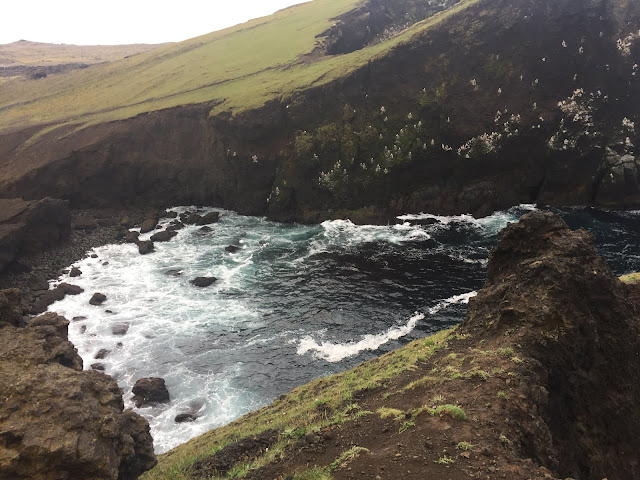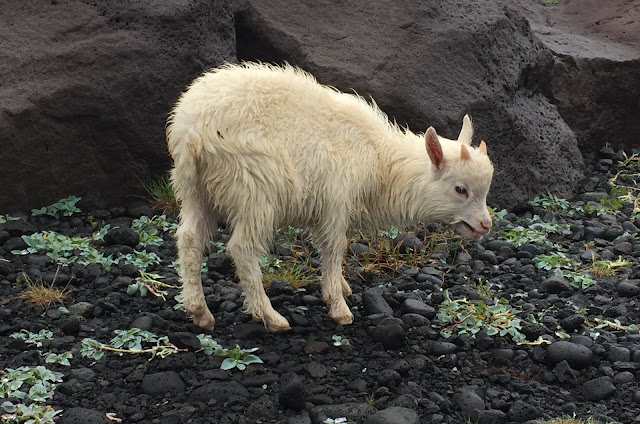Iceland and Norway's Natural Beauty
This summer, in July of 2018, I was lucky enough to travel to Iceland and Norway with my choir (the Los Angeles Children's Chorus). While we were there, we traveled around both of the countries and witnessed some of the countries' natural beauty.
Iceland absolutely took my breath away. While on tour in Iceland, I constantly wished that I was alone, not because I didn't like my fellow choristers but because I wanted to just sit in silence and experience the absolute peace and quiet that can be found in Iceland. I saw towering cliffs, enormous waterfalls, the bridge between the Eurasian and North American tectonic plates, the out-of-this-world blue lagoon, fields of volcanic rock, and so much more. The sheer variety of Iceland's nature is astonishing, let alone the fact that so much of this nature is shielded from human impact. Although the US also has some incredible natural sights (that can be seen in Yosemite and other National Parks), I feel like there are always Americans and tourists swarming and/or contaminating those sights. The neat thing about Iceland for me was that there were so few humans there to ruin the nature. Although some of Iceland's nature was commercialized and very touristy (like the Blue Lagoon), there were many moments where the only people around were my fellow choir members.
Some pictures of Iceland's nature:









While in Norway, my choir and I took a boat through some of Norway's fjords (long, narrow, and deep waterways between high cliffs). I was struck by how isolated and untouched the fjords were. Unlike in Southern California, where people seem to take up every possible inch of space (unless it is specifically protected by law), the fjords are largely empty of human settlement. Only in moments like that, when I am surrounded by nature and not overwhelmed by the presence of humans, can I truly reflect upon the impact humanity has had on nature. I was shocked to see these fjords left so untouched because back in the US, I constantly witness people (whether they are apart of large business corporations or even just small homeowners) encroaching upon nature. I mean, there is a reason the mountain lion population of the Santa Monica Mountains is in danger: Americans have continued to take up their territory and have now boxed these lions in by building enormous highways/freeways, effectively trapping them (which negatively causes their reduced genetic variability). As a result, what I loved about Norway's fjords is that large sections of them were free from human expansion and were thus left in their natural states.
Some pictures of Norway's fjords:





Iceland absolutely took my breath away. While on tour in Iceland, I constantly wished that I was alone, not because I didn't like my fellow choristers but because I wanted to just sit in silence and experience the absolute peace and quiet that can be found in Iceland. I saw towering cliffs, enormous waterfalls, the bridge between the Eurasian and North American tectonic plates, the out-of-this-world blue lagoon, fields of volcanic rock, and so much more. The sheer variety of Iceland's nature is astonishing, let alone the fact that so much of this nature is shielded from human impact. Although the US also has some incredible natural sights (that can be seen in Yosemite and other National Parks), I feel like there are always Americans and tourists swarming and/or contaminating those sights. The neat thing about Iceland for me was that there were so few humans there to ruin the nature. Although some of Iceland's nature was commercialized and very touristy (like the Blue Lagoon), there were many moments where the only people around were my fellow choir members.
Some pictures of Iceland's nature:









While in Norway, my choir and I took a boat through some of Norway's fjords (long, narrow, and deep waterways between high cliffs). I was struck by how isolated and untouched the fjords were. Unlike in Southern California, where people seem to take up every possible inch of space (unless it is specifically protected by law), the fjords are largely empty of human settlement. Only in moments like that, when I am surrounded by nature and not overwhelmed by the presence of humans, can I truly reflect upon the impact humanity has had on nature. I was shocked to see these fjords left so untouched because back in the US, I constantly witness people (whether they are apart of large business corporations or even just small homeowners) encroaching upon nature. I mean, there is a reason the mountain lion population of the Santa Monica Mountains is in danger: Americans have continued to take up their territory and have now boxed these lions in by building enormous highways/freeways, effectively trapping them (which negatively causes their reduced genetic variability). As a result, what I loved about Norway's fjords is that large sections of them were free from human expansion and were thus left in their natural states.
Some pictures of Norway's fjords:






Comments
Post a Comment